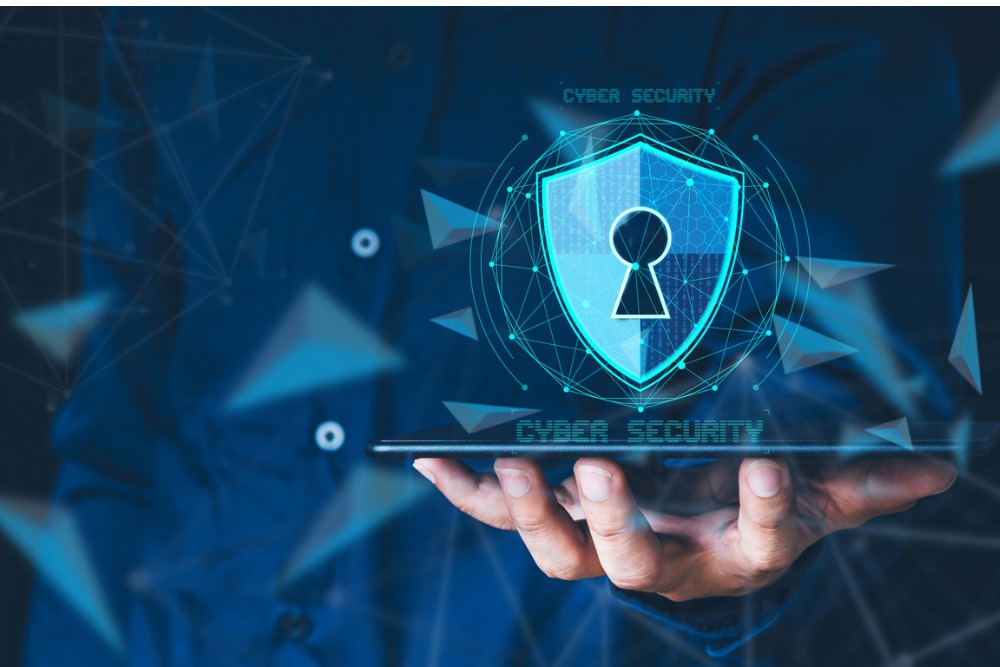Many small and mid-size businesses must protect their assets from various threats. This includes cyber threats, which are often underestimated. More companies need to start learning about potential dangers and how to implement the best cybersecurity practices.
A tough cybersecurity policy can make network infrastructure more secure and employees less likely to be targeted in online attacks. Even better, a robust cybersecurity architecture isn’t as expensive as many business owners believe.
Cybersecurity Overview
Cybersecurity is an essential component of any business. It determines how network infrastructure is protected from various types of cyberattacks. A cybersecurity architecture relies on policies, standards, tools, and privacy controls to identify, eliminate, and prevent outside threats to a company’s network.
It often deploys hardware and software security measures and specific practices to deny access to malicious intruders.
Because many companies conduct large portions of their business online, from marketing to customer interaction to transactions, much sensitive data is stored online. There is always a risk of sensitive data being attacked via communication channels like social media platforms and websites.
All of these things are attractive targets for cybercriminals.
Common Reasons to Invest in Digital Security
The idea of cybersecurity architecture can seem overly complex. At its core, its primary purpose is to stop external threats from accessing, stealing, or corrupting data.
Hackers can use anything from brute force attacks to phishing, injecting malware into apps and websites, etc. Proper cybersecurity architecture can also protect companies from internal threats, intentional or not.
Sometimes employees share confidential information unwillingly or because they lack awareness of cyber threats. Other times, poorly configured permission policies or network management can create vulnerabilities.
Whatever the reason, creating a cybersecurity architecture can offer many benefits.
- Data breach prevention
- Better regulatory compliance
- Faster post-hack recovery times
- Network and data protection
- Denying unauthorized intrusions
- Protecting workstations and all other network devices
- Maintaining a good reputation with clients
How to Approach Digital Security
Cybersecurity architectures rely on three crucial components. Companies must have the right tools, processes, and employees or partners to oversee operations. No system can be completely autonomous, and no cybersecurity component can work without great tools.
Here’s what a cybersecurity blueprint might look like in small to enterprise-level companies.
The Incident Response Plan
An incident response plan dictates how to quickly and efficiently resolve any intrusive attempts, from brute force attacks to malware and phishing. The plan will detail the systems used to block multiple cyberattacks and notify companies of dangerous attacks they can’t currently prevent.
Incident response plans must differentiate between what constitutes an event, notification or alert, and response. With a clear plan in place, companies often form Incident Response Teams. These are employees, partners, and third-party operators qualified and ready to implement the plan and deal with network threats.
Automation can help a lot. It’s best to balance automated systems with human experts when monitoring and protecting networks.
The Recovery Plan
Many industries have so-called disaster recovery plans. A similar concept is used in cybersecurity for a simple reason. No network is 100% secure as long as there are unknown threats and yet undiscovered vulnerabilities.
Cybersecurity experts operate from a what-if premise. If something were to happen, businesses need a disaster recovery plan to get operations up and running after a successful cyberattack.
These plans dictate the correct methods and tools needed to restore network access and functionality as quickly as possible.
Great recovery plans come with detailed steps to stop intrusions, prevent further data leaks, and regain control of the system. Once initiated, the recovery plan must allow networks to function properly and without vulnerabilities to further cyberattacks, especially those of the same type.
Depending on the circumstances, cybersecurity recovery plans can outline many steps.
- How to communicate the threat
- Methods to minimize financial damage
- How to manage the company’s reputation
- Accessing backup locations
- Fixing leaks
- Prioritizing which systems to restore
Policies to Consider
One of the most important cybersecurity policies is the one regarding account or identity management. Think of it in terms of access control. The cybersecurity architecture should dictate who can use the digital network and monitor communications between devices and individuals.
Detailed security logs can help companies record their employees’ actions to determine who is capable of adhering to strict protocols and who presents a security risk.
Using a zero-trust policy is often best because it implies using the strictest authentication procedures for everyone who interacts with a company’s network. It can quickly and safely authenticate requests without compromising network protection and prevent abuse of trust or mishandling of sensitive data.
Encryption
No cybersecurity architecture is complete without encryption. Hiding data behind firewalls and scanning for malware isn’t enough to prevent a breach or data interception.
Encryption is crucial for safeguarding data while in transit or after it reaches its destination. Only the intended recipient can decipher messages and data packets when done correctly. Even if cybercriminals intercepted the data, they would have a laborious job trying to unscramble the information without the correct decryption key.
It’s Never Too Early to Invest in Cybersecurity
A good cybersecurity strategy is one of the best long-term investments business owners can make for their companies. Online threats are increasing as more processes and operations move into the digital space.
The situation is even direr after considering how many companies have started creating partial or completely remote or hybrid workplaces. Protecting devices and entire networks is increasingly difficult. The faster you can protect them, the better.
Working with experienced cybersecurity service providers can help you catch up on your digital network security needs. If you’re based in Cincinnati, Columbus, Dayton, or Mansfield, contact OIT for more information and assistance.



Leave A Comment
You must be logged in to post a comment.